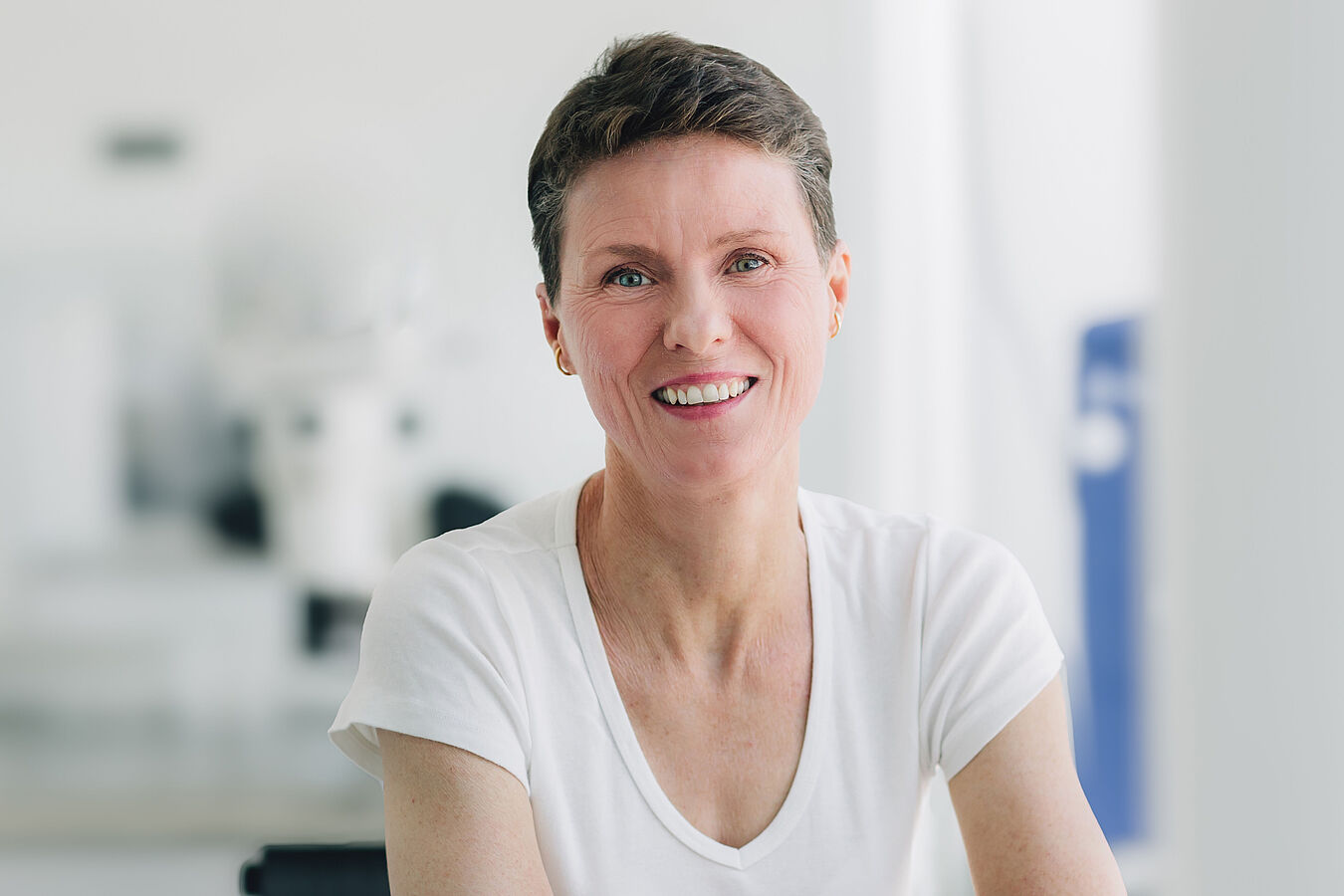The interview was conducted by Patricia Löwe on March 5, 2025.
Patricia Löwe: In 2005, you were the fifth woman to receive the Marthe Vogt Award from the Forschungsverbund Berlin e. V., which was then called the Young Female Scientist Award. You were 31 years old. What was your situation as a young scientist at that time?
Astrid Vogel: When I was 30, I had completed my doctoral thesis at the Humboldt University's Institute of Behavioral Physiology. The focus of my work was neurobiology. Then my doctoral supervisor, Prof. Dr. Bernhard Ronacher, nominated me for this award. At the same time, I was looking for a postdoctoral position. I wasn't sure yet if I wanted to stay in science. I had a strong desire to start a family — it was a year after I got married.
PL: Did you already know as a student that you wanted to do a PhD?
AV: Definitely by the end of my studies. After completing my diploma thesis in my mid-20s, I worked for a year in the department of my future doctoral supervisor without having started my doctorate. Five years later, I had my degree.
PL: Why did starting a family conflict with an academic career?
AV: Neither fixed-term contracts nor the “Wissenschaftszeitgesetz” (German Academic Career Law) were a problem for me. It was the pressure to publish that put me off. Even in natural sciences, it should be more or less easy for you to summarize your findings so that you can publish regularly. Otherwise, it's torture. I enjoyed writing my dissertation, but I didn't want to do that forever. On the other hand, I had a lot of fun teaching!
PL: What was your dissertation about?
AV: I went to the basement to get my dissertation especially for this interview! (laughs) The title is: “Die neuronale Variabilität und Korrelationen als begrenzende Faktoren für die Verarbeitung und Kodierung zeitlich strukturierter akustischer Signale” [“Neural variability and correlations as limiting factors for the processing and encoding of time-structured acoustic signals”]. It was about the communication behavior of grasshoppers — they were my lab animals. When they are sitting in the grass, they have to find their mates, which they do using acoustic signals. The nervous system of grasshoppers is not as complex as that of higher vertebrates. This makes it a good subject for study. I looked at how neural filter mechanisms help to recognize certain signal parameters. Imagine that five different species of grasshoppers are sitting in a meadow and each has to recognize its matching males and females. The signals of the species differ. I investigated which groups of neurons are responsible for recognizing these differences.
Acoustic signals can be drained from the grasshoppers' nerves using a small microelectrode. They are electrical signals that can be made visible and audible. The grasshoppers' hearing organ is located in the first abdominal segment. From there, the auditory nerve leads to small thoracic ganglia, i.e., nerve nodes located in the chest area, where the first stages of processing take place. There, I tried to find cells that react to the signals in a certain way. This can be made visible with an electronic measuring device called an oscilloscope.
PL: What did the Young Female Scientist Award mean to you back then?
AV: It was an incredibly wonderful acknowledgment. A doctoral thesis can be a real rollercoaster ride. I often felt like I would never finish, that there was still a huge mountain ahead of me. But at some point, I finally made it. That made me very happy. But then winning this award was truly amazing. It was exciting to give a presentation at the award ceremony; I'm not one of those people who particularly enjoy presenting in public, but it was a great experience. I even came back from vacation early for it. (laughs)
PL: Today you are working at a fertility clinic. What led you there?
AV: After my doctoral thesis, I went to Hamburg for a postdoc. Soon after that, I was expecting my first child. My husband had found a job in Munich and I wanted to reorganize my life. So I applied for a job as an embryologist at a fertility clinic there; that was in 2007.
I now work at a different clinic that employs only women. It's really nice and I love my job. I'm the lab manager here and still benefit from my experience as a scientist.
PL: So you actually create the embryos?
AV: Exactly! I inject the sperm into the eggs and take care of everything that is important during this process. But my work also involves documentation and caring for patients. It is important to us that patients know who is taking care of their eggs and that a personal connection is established. A colleague of mine once said, “Every egg gets a face.”
Of course, it's still a very stressful job. The demand for fertility treatment is growing because women today prefer to wait longer so they can pursue a career. We have a lot to do – especially in urban areas. I enjoy working a lot, even in the afternoons and on weekends, but I still want to have time for my children. As a woman, it's not always easy to juggle all these responsibilities. But it's still a wonderful challenge that I'm happy to take on.
PL: What advice would you give to young women in science?
AV: I would encourage any female student who is considering a career in science to find a topic that she is passionate about. That's the only way to muster the fervor and energy to do what it takes: write a doctoral thesis, climb the career ladder, etc. Staying true to your genuine professional interests is essential for pursuing this path. Science isn't always an easy field to work in. Strong inner motivation can help young female scientists overcoming obstacles.


